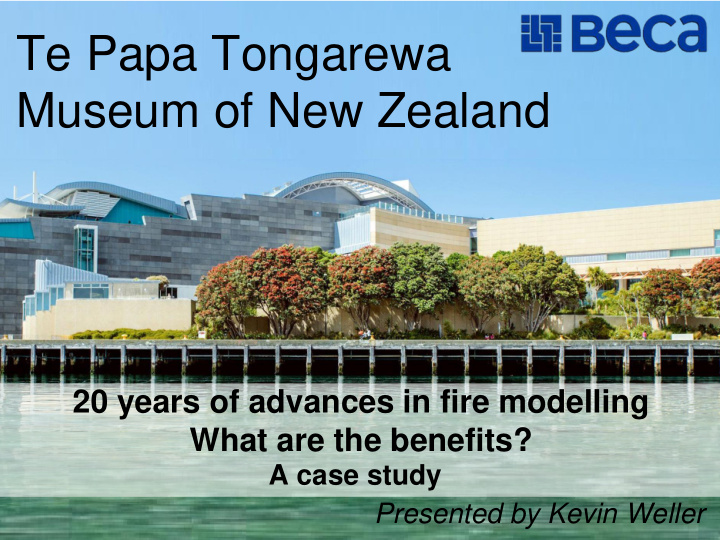



Te Papa Tongarewa Museum of New Zealand 20 years of advances in fire modelling What are the benefits? A case study Presented by Kevin Weller
About Te Papa • Built 1996 • 5 hectares • 6 floors • Large atriums • Single compartment
Smoke Control System
Building Code Then • ‘Acceptable Solution’ • Large atriums → Alternate solution → 10 minutes to evac. → Indefinite tenability
Building Code Now • Compliance Document • ASET vs RSET – Set performance requirements
Engineering tools • FIRE SIMULATOR – Zone model • EVACNET+ – Nodal model
Engineering tools • FDS – Revit – PyroSim – Smokeview • Pathfinder – Revit
Then vs Now a greater understanding or additional complexity? What are the benefits?
Entrance Atrium Fire • 22m ceiling • Four levels • Protected by – Smoke extract – Deluge + Flame detection
Entrance Atrium Fire • FIRE SIMULATOR • Single Room • 4MW fire • Design layer height + Safety Factor
Spill Plume vs. Atrium Fire
Entrance Atrium Fire Now • FDS • FDS • 1.5MW fire • 1.5MW fire. • Spill Plume Fire • Spill Plume Fire
Entrance Atrium Fire • FDS • 1.5MW fire • Spill Plume Fire • Failed Tenability
Entrance Atrium Fire
Evacuation Modelling EVACNET+ • 1 model • 4200 people • All exits available • 10 minute limit • 520 s Evac
Evacuation Modelling • Pathfinder • 3500 people • 460 s to safe place • 610s to outside
Evacuation Modelling • 520s for 4500 people vs • 610s for 3500 people
Evacuation Modelling • Blocked Exit • 1400 people • 1200 s Evac
Acceptance Criteria • Maintained tenability • Evacuation under 10 minutes • ASET vs RSET
Conclusion Then Now • Safety factors • More detailed • Limited • More complex assessment • Better • Little detail understanding Benefit: a safer building
Questions?
Recommend
More recommend